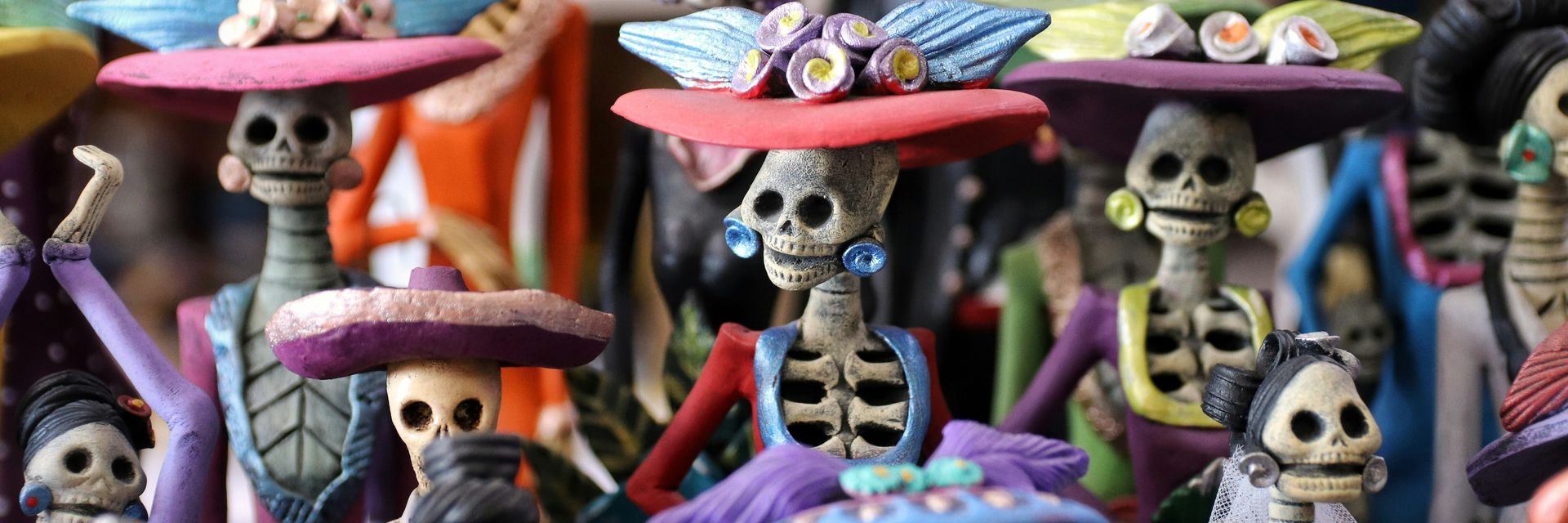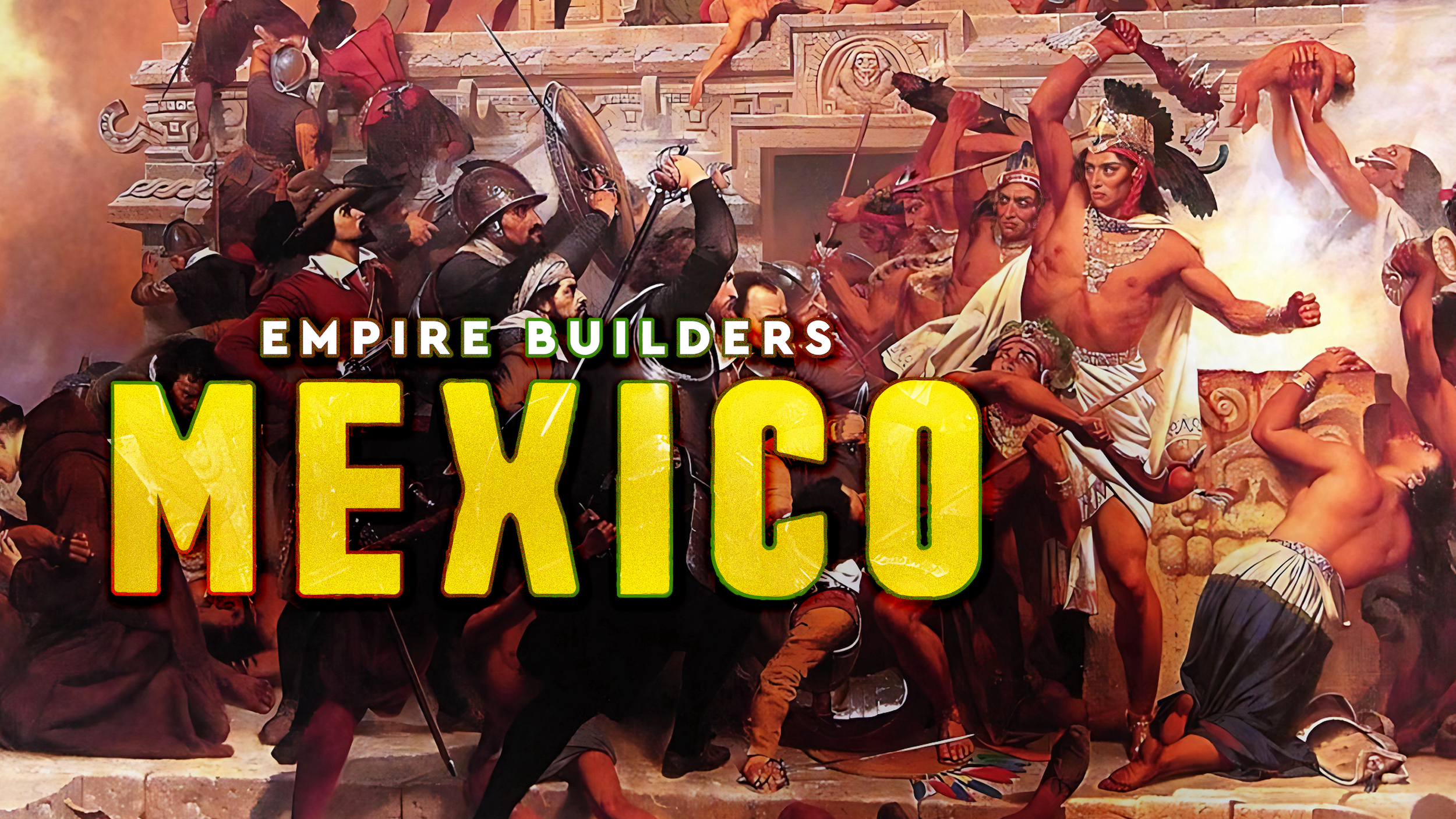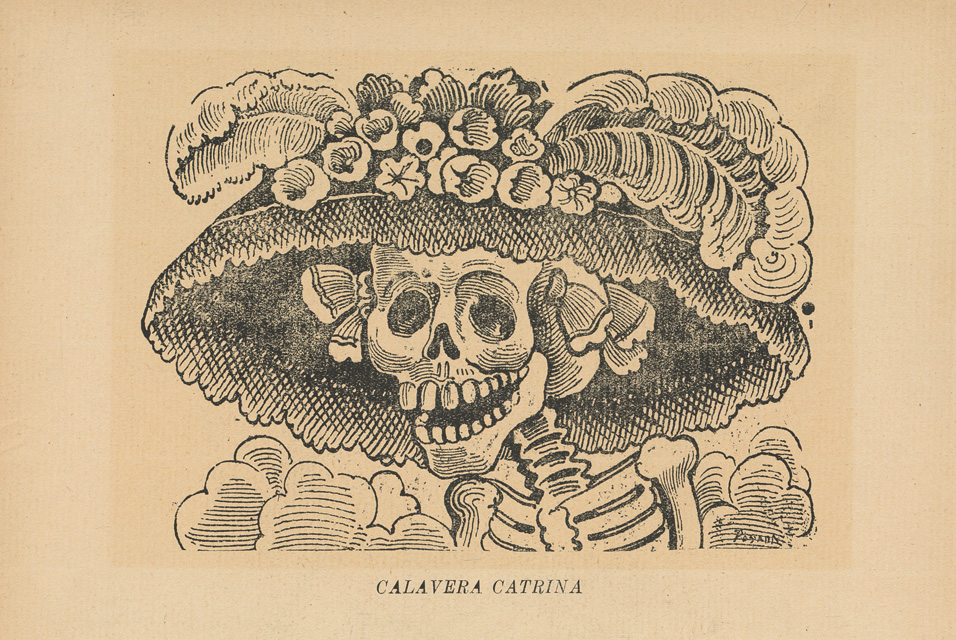Many recognize Día de los Muertos as an important holiday in Mexico and beyond, but why is it celebrated exclusively in Latin America? To find the answer, we need to know a little about Aztecs and a little about colonization.
◊
Centuries before conquistadors reached Mesoamerica, Aztecs observed an annual holiday to celebrate Mictecacihuatl. As this “Lady of the Dead” ruled the underworld, her responsibility was to watch over the bones of previous lives.
Aztecs believed that bones of previous lives gave rise to new life in the land of the living. Once a year, Mictecacihuatl would ascend to our world to ensure the “bones of previous lives” were enjoying respectful and responsible use. Aztecs honored this arrival with dancing, drinking, and banquets, thanking her for protection.
Mexico's long and complex history is explored in this enlightening MagellanTV documentary series.
What Does Combining Aztec and Catholic Beliefs Look Like?
When the Spanish arrived in the 15th and 16th centuries, they sought a dependable way to convert indigenous people to Catholicism. At first, they simply coerced locals to convert, but some conquistadors took note of Aztec celebrations of death and sought to co-opt them for the purposes of the Church.
Accordingly, Spaniards began to combine local rituals and practices with those of All Saints’ Day and All Souls’ Day. Back in Spain, families decorated graves and held banquets on these pagan-turned-Catholic holidays. So why not adapt them in the Spanish colonies?
These Mesoamerican celebrations of death that combined local beliefs with Catholicism were among the first Days of the Dead. While Día de los Muertos is central to Mexican culture, people all over Latin America celebrate the holiday.
What Are the Enduring Practices of Día de los Muertos?
Día de los Muertos is actually divided into two days: November 1st is for celebrating the lives of dead children, while November 2nd is for celebrating the lives of adults and elders who’ve passed away. Despite the obvious chronology and macabre themes, Día de los Muertos has nothing to do with Halloween. They’re entirely separate, unique holidays.
Practices that endure to the modern day include constructing altars with photos of the deceased or any of the deceased’s favorite foods and sculpting “calaveras,” or decorative skulls, from sugar.
Part of the skeletal imagery surrounding Día de los Muertos comes from the original Aztec celebration, but it also comes from the 19th century when a cartoonist, José Guadalupe Posada, drew La Catrina, a skeletal caricature that poked fun at a desire among Mexicans to look more European.
Calavera de Catrina (Skull of the Female Dandy) by José Guadalupe Posada, 1913 (Source: ArtDaily org, via Wikimedia Commons)
How Is Día de los Muertos Different Today?
Citizens across Europe continue to celebrate All Souls’ Day and All Saints’ Day as they did hundreds of years ago, but the level of extravagance and debauchery isn’t comparable to the bustling and lively celebration that Día de los Muertos has become. What was once part of a proselytization strategy has completely changed to be among the most significant annual celebrations in Latin America and beyond.
Most importantly, Día de los Muertos isn’t a time to express sadness. Between great food and dances in colorful costumes, this holiday is all about celebrating the lives of those who’ve completed their journeys rather than lamenting those with whom we can no longer share our time.
Ω
Title Image credit: Mario Mendez, via Unsplash



